
Description
Clarissa Harlowe, or The History of a Young Lady is one of the longest novels in the English language. Written by Samuel Richardson over a period of several years and published in 1748, it is composed entirely of letters. Though this may seem daunting, the novel is highly regarded and is considered by many critics as one of the greatest works of English literature, appearing in several lists of the best British novels ever written.
The novel tells the story of young Clarissa, eighteen years of age at the start of the novel. She is generally regarded by her family, neighbors, and friends as the most virtuous and kind young woman they know. But she is drawn into correspondence with Richard Lovelace, a well-born, rich young man regarded as something of a rake, when she attempts to reconcile a dispute between Lovelace and her rash brother. Lovelace, imagining this indicates her love for him, carries out a series of strategems which result in him essentially abducting her from her family, from whom Clarissa then becomes estranged.
Much of the correspondence consists of the letters between Clarissa and her close friend Anna Howe, and between Lovelace and his friend Jack Belford, to whom he confesses all of his strategems and “inventions” in his assault on Clarissa’s honor.
The novel is thus a fascinating study of human nature. Much of Lovelace’s actions and attitudes towards women are regrettably only too familiar to modern readers. And while Clarissa herself may be a little too good to be true, nevertheless she is shown as having some flaws which lead to a tragic outcome.
This Standard Ebooks edition is based on the 9-volume Chapman and Hall edition of 1902.
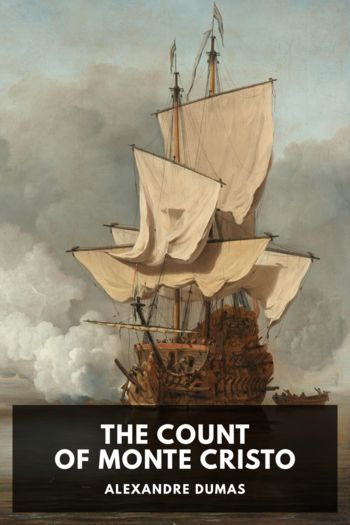
Description
Edmond Dantès is a young man about to be made captain of a cargo vessel and marry his sweetheart. But he is arrested at his pre-wedding feast, having been falsely accused of being a Bonapartist. Thrown into the notorious Château d’If prison, he eventually meets an ancient inmate who teaches him language, science, and passes hints of a hidden fortune. When Edmond makes his way out of prison, he plots to reward those who stood by him (his old employer, for one), and to seek revenge on the men who betrayed him: one who wrote the letter that denounced him, one that married his fiancée in his absence, and one who knew Dantès was innocent but stood idly by and did nothing.
The Count of Monte Cristo is another of Alexandre Dumas’ thrilling adventure stories, possibly more popular even than The Three Musketeers. Originally serialized in a French newspaper over the course of a year-and-a-half, it was enormously popular after its publication in book form, and has never been out of print since. Its timeless story of adventure, historical drama, romance, revenge, and Eastern mystery has been the source of over forty movies and TV series.

Description
G.K. Chesterton was an English writer, journalist, philosopher, poet and lay theologian. He delighted in standing conventional wisdom on its head in order to expose what he considered to be the lack of substance in the “vague modern.”
In Heretics, he touches on a range of topics, including social Darwinism, eugenics, nihilism and atheism, while enumerating the flaws he finds in the work of his intellectual contemporaries such as Rudyard Kipling, Friedrich Nietzsche, George Bernard Shaw, and H. G. Wells.
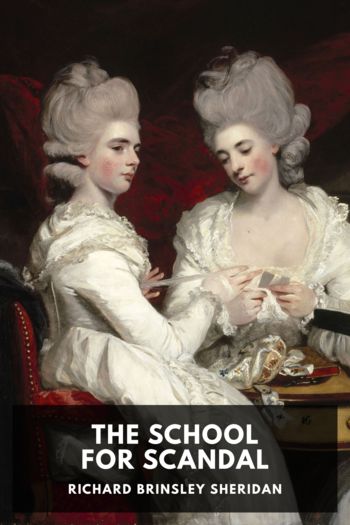
Description
One of the most celebrated English comedies of manners, Sheridan’s The School for Scandal was first produced in 1777 at London’s Drury Lane Theatre. It opened just a year after Sheridan succeeded the famous actor/manager David Garrick as manager and, after Garrick had read the play, he even volunteered to write the prologue—lending his much desired endorsement to the production. The School for Scandal was extremely well received by its audiences as well as by many contemporary critics.
The plot revolves around members of London’s Georgian society who delight in rumor and gossip and the infelicities and flaws of others. Although they draw their victims from their own membership, they let no action go un-noted or uncriticized. But as the plot unfolds events don’t always prove quite so titillating, and not a few find themselves victims of their own love of scandal.
The comedy of manners was a staple of Restoration theatre with William Congreve and Molière being its most famous proponents. After it fell out of favor it was revived in the later part of the 1700s when a new generation of playwrights like William Goldsmith and Richard Sheridan took up writing them again. Praised for its tight writing and razor wit, The School for Scandal skewered high-society with such spirited ridicule and insight that it earned Sheridan the epithet of “the modern Congreve.”
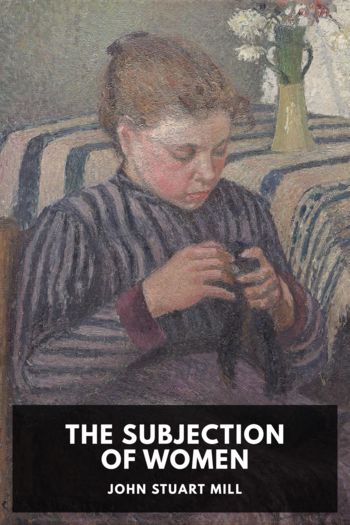
Description
Known primarily for his work in political philosophy, ethics, and economics, John Stuart Mill is perhaps less well known as an early feminist thinker.
Published in 1869, The Subjection of Women was ahead of its time. Motivated by the conviction that the subordination of women was “one of the chief obstacles to human improvement,” Mill argued not merely for women’s suffrage, but for “a principle of perfect equality”—the complete social, political, and legal equality of the sexes.
Mill credited his late wife, Harriet Taylor Mill, with many of the important ideas put forth in the book.
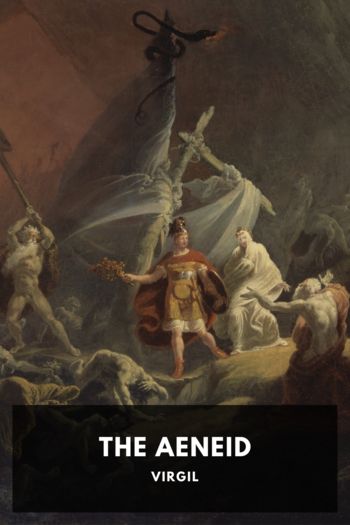
Description
Virgil’s epic poem begins with Aeneas fleeing the ruins of Troy with his father Anchises and his young son Ascanius, with a plan to make a home in Italy. Because of a prophecy foretelling that the descendants of Aeneas will one day destroy Carthage, Juno’s favorite city, Juno orders the god of the winds to unleash a terrible storm. The ships are thrown off course and arrive at an African port. As Aeneas makes his way towards his new home he encounters Dido, Carthage’s queen, and falls deeply in love.
Although Charles W. Elliot stated that “the modern appreciation of the Iliad and the Odyssey has tended to carry with it a depreciation of the Aeneid,” this epic poem continues to inspire artists, writers, and musicians centuries after its first telling. John Dryden’s translation captures the musicality of the original Latin verses while avoiding the stumbling of an English translation forced into dactylic hexameter.
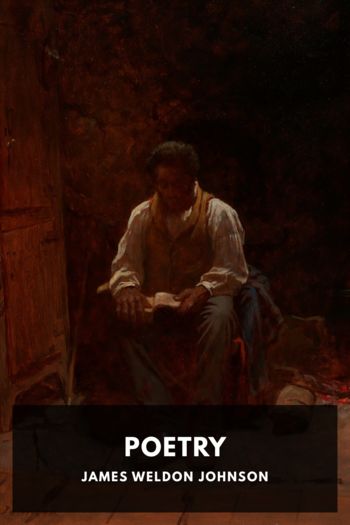
Description
This collection contains the poems written by James Weldon Johnson between 1899 and 1922. During this period of Johnson’s life, he worked as a Broadway songwriter with his brother John Rosamund in the early 1900s, served as a United States Consul in Venezuela from 1906 to 1908 and in Nicaragua from 1909 to 1913, and was appointed as the first executive secretary of the National Association for the Advancement of Colored People (NAACP) in 1920. Johnson’s work arose in the milieu of the 1920s “Harlem Renaissance,” a term which Johnson personally refused to use, favoring “the flowering of Negro literature” instead.
Perhaps among the most notable works anthologized in this collection are the lyrics of “Lift Ev’ry Voice and Sing,” a hymn originally written as a poem by Johnson in 1899. Having been dubbed “The Black National Anthem,” the hymn has taken on the significance of a rallying cry for black Americans and is a frequent inclusion in Christian hymnals.

Description
Anthony Patch, the grandson of a wealthy businessman, spends his youth in idle relaxation expecting to inherit his grandfather’s fortune. But when he meets Gloria, a vibrant young flapper, the two feel an irresistible attraction and quickly get married despite their clashing personalities.
The two embark on a lifestyle of Jazz Age living: hard partying, profligate spending, and generally living the high life. But Anthony’s prohibitionist grandfather soon finds out and disowns Anthony, sending their lifestyle crashing down from its former heights to intolerable indignity.
Like Fitzgerald’s previous novel, This Side of Paradise, and his next novel, The Great Gatsby, The Beautiful and Damned documents the life of the idle rich in America’s Jazz Age. Both Anthony and Gloria’s characters explore the problem of what one is left to do when one has no other purpose in life. Because Anthony’s expecting a large inheritance, his ambition is muzzled and he feels no need to embark on a career or participate in the betterment of society. Gloria’s main purpose in life was to find a husband; once she’s done that, what’s left except spending money and partying?
The relationship between Anthony and Gloria is the explosive propellant that drives the plot. The two are clearly a poor match for each other. While Anthony is an aimless aesthete who expects to inherit wealth and power, Gloria is a self-absorbed socialite mostly banking on her undisputed beauty. Their mutual selfishness leads to constant conflict, and eventually, to mutual dislike. But despite that, the two remain together, locked in to their self-absorption, lack of ambition, and obsession with the past, as Anthony descends into alcoholism and Gloria into desperate middle age.
Anthony and Gloria are fairly transparent fictionalizations of Fitzgerald himself and his wife Zelda. Their relationship was famously tumultuous, and parallels Anthony and Gloria’s highs and lows. Fitzgerald himself was born to upper-middle-class wealth and led a aimless youth before turning to the army and to writing; in his later years, he considered himself nothing more than a middling success and turned to writing for Hollywood before totally embracing the alcoholism he had courted since his college days, and that would finally kill him. Zelda, for her part, was a socialite and the canonical “flapper.” Beautiful and bubbly, she enabled the legendarily hard-partying lifestyle that fueled their bitter fights. Her mercurial disposition later led her to being committed to an asylum for schizophrenia. Even the cover illustration of the book’s first edition features a couple meant to resemble Fitzgerald and Zelda.
Today, The Beautiful and Damned is not just a glittering record of Jazz Age excess, it’s a nuanced character study of how expectation can ruin ambition, and how relationships aren’t always easy to endure—or to dissolve.

Description
Hundreds of millions of years ago, two near-omnipotent alien races encountered each other, beginning a conflict that will shape the history of the entire universe. The benevolent Arisians covertly influence humanity, hoping to create a people capable of one day defeating the vile Eddorians, who are waging their own campaign for the fate of civilization on Earth. This sets the stage for a clash between the Triplanetary League of the inner solar system, the enigmatic pirate-scientist Roger, and the Nevians, interlopers whose first appearance wreaks havoc among the other parties.
Triplanetary is the first of Edward E. “Doc” Smith’s Lensman series, an early and influential entry in the space opera genre. Originally serialized in Amazing Stories in 1934 as a stand-alone story, Triplanetary was collected in book form in 1948 with six new chapters and numerous additions, changing the story to be a prequel to the rest of the Lensman series.

Description
Lord Jim was first published as a serial in Blackwood’s Magazine between October 1899 and November 1900. The first edition of the complete book was published by William Blackwood and Sons in 1900. The story begins when the young British seaman Jim, one of the crew of the steamer Patna, abandons the ship while it’s in distress. The resulting censure prevents Jim from finding stable employment, until a captain named Marlow suggests he find his future in Patusan, a small village on a remote island in the South Seas. There he’s able to earn the respect of the islanders and is dubbed “Lord Jim.”
The abandoning of the Patna by its crew is said to have been based on the real-life abandoning of the S.S. Jeddah in 1880. Lord Jim explores issues of colonialism, dreams of heroism, guilt, failure, and redemption. The book is remarkable for its unusual nested narrative structure, in which Captain Marlow and a number of other characters provide multiple perspectives of the protagonist. The gradual build-up of their richly described viewpoints imparts glimpses of Jim’s inner life, yet ultimately leaves him unknowable.

Description
Clarissa Harlowe, or The History of a Young Lady is one of the longest novels in the English language. Written by Samuel Richardson over a period of several years and published in 1748, it is composed entirely of letters. Though this may seem daunting, the novel is highly regarded and is considered by many critics as one of the greatest works of English literature, appearing in several lists of the best British novels ever written.
The novel tells the story of young Clarissa, eighteen years of age at the start of the novel. She is generally regarded by her family, neighbors, and friends as the most virtuous and kind young woman they know. But she is drawn into correspondence with Richard Lovelace, a well-born, rich young man regarded as something of a rake, when she attempts to reconcile a dispute between Lovelace and her rash brother. Lovelace, imagining this indicates her love for him, carries out a series of strategems which result in him essentially abducting her from her family, from whom Clarissa then becomes estranged.
Much of the correspondence consists of the letters between Clarissa and her close friend Anna Howe, and between Lovelace and his friend Jack Belford, to whom he confesses all of his strategems and “inventions” in his assault on Clarissa’s honor.
The novel is thus a fascinating study of human nature. Much of Lovelace’s actions and attitudes towards women are regrettably only too familiar to modern readers. And while Clarissa herself may be a little too good to be true, nevertheless she is shown as having some flaws which lead to a tragic outcome.
This Standard Ebooks edition is based on the 9-volume Chapman and Hall edition of 1902.

Description
Edmond Dantès is a young man about to be made captain of a cargo vessel and marry his sweetheart. But he is arrested at his pre-wedding feast, having been falsely accused of being a Bonapartist. Thrown into the notorious Château d’If prison, he eventually meets an ancient inmate who teaches him language, science, and passes hints of a hidden fortune. When Edmond makes his way out of prison, he plots to reward those who stood by him (his old employer, for one), and to seek revenge on the men who betrayed him: one who wrote the letter that denounced him, one that married his fiancée in his absence, and one who knew Dantès was innocent but stood idly by and did nothing.
The Count of Monte Cristo is another of Alexandre Dumas’ thrilling adventure stories, possibly more popular even than The Three Musketeers. Originally serialized in a French newspaper over the course of a year-and-a-half, it was enormously popular after its publication in book form, and has never been out of print since. Its timeless story of adventure, historical drama, romance, revenge, and Eastern mystery has been the source of over forty movies and TV series.

Description
G.K. Chesterton was an English writer, journalist, philosopher, poet and lay theologian. He delighted in standing conventional wisdom on its head in order to expose what he considered to be the lack of substance in the “vague modern.”
In Heretics, he touches on a range of topics, including social Darwinism, eugenics, nihilism and atheism, while enumerating the flaws he finds in the work of his intellectual contemporaries such as Rudyard Kipling, Friedrich Nietzsche, George Bernard Shaw, and H. G. Wells.

Description
One of the most celebrated English comedies of manners, Sheridan’s The School for Scandal was first produced in 1777 at London’s Drury Lane Theatre. It opened just a year after Sheridan succeeded the famous actor/manager David Garrick as manager and, after Garrick had read the play, he even volunteered to write the prologue—lending his much desired endorsement to the production. The School for Scandal was extremely well received by its audiences as well as by many contemporary critics.
The plot revolves around members of London’s Georgian society who delight in rumor and gossip and the infelicities and flaws of others. Although they draw their victims from their own membership, they let no action go un-noted or uncriticized. But as the plot unfolds events don’t always prove quite so titillating, and not a few find themselves victims of their own love of scandal.
The comedy of manners was a staple of Restoration theatre with William Congreve and Molière being its most famous proponents. After it fell out of favor it was revived in the later part of the 1700s when a new generation of playwrights like William Goldsmith and Richard Sheridan took up writing them again. Praised for its tight writing and razor wit, The School for Scandal skewered high-society with such spirited ridicule and insight that it earned Sheridan the epithet of “the modern Congreve.”

Description
Known primarily for his work in political philosophy, ethics, and economics, John Stuart Mill is perhaps less well known as an early feminist thinker.
Published in 1869, The Subjection of Women was ahead of its time. Motivated by the conviction that the subordination of women was “one of the chief obstacles to human improvement,” Mill argued not merely for women’s suffrage, but for “a principle of perfect equality”—the complete social, political, and legal equality of the sexes.
Mill credited his late wife, Harriet Taylor Mill, with many of the important ideas put forth in the book.

Description
Virgil’s epic poem begins with Aeneas fleeing the ruins of Troy with his father Anchises and his young son Ascanius, with a plan to make a home in Italy. Because of a prophecy foretelling that the descendants of Aeneas will one day destroy Carthage, Juno’s favorite city, Juno orders the god of the winds to unleash a terrible storm. The ships are thrown off course and arrive at an African port. As Aeneas makes his way towards his new home he encounters Dido, Carthage’s queen, and falls deeply in love.
Although Charles W. Elliot stated that “the modern appreciation of the Iliad and the Odyssey has tended to carry with it a depreciation of the Aeneid,” this epic poem continues to inspire artists, writers, and musicians centuries after its first telling. John Dryden’s translation captures the musicality of the original Latin verses while avoiding the stumbling of an English translation forced into dactylic hexameter.

Description
This collection contains the poems written by James Weldon Johnson between 1899 and 1922. During this period of Johnson’s life, he worked as a Broadway songwriter with his brother John Rosamund in the early 1900s, served as a United States Consul in Venezuela from 1906 to 1908 and in Nicaragua from 1909 to 1913, and was appointed as the first executive secretary of the National Association for the Advancement of Colored People (NAACP) in 1920. Johnson’s work arose in the milieu of the 1920s “Harlem Renaissance,” a term which Johnson personally refused to use, favoring “the flowering of Negro literature” instead.
Perhaps among the most notable works anthologized in this collection are the lyrics of “Lift Ev’ry Voice and Sing,” a hymn originally written as a poem by Johnson in 1899. Having been dubbed “The Black National Anthem,” the hymn has taken on the significance of a rallying cry for black Americans and is a frequent inclusion in Christian hymnals.

Description
Anthony Patch, the grandson of a wealthy businessman, spends his youth in idle relaxation expecting to inherit his grandfather’s fortune. But when he meets Gloria, a vibrant young flapper, the two feel an irresistible attraction and quickly get married despite their clashing personalities.
The two embark on a lifestyle of Jazz Age living: hard partying, profligate spending, and generally living the high life. But Anthony’s prohibitionist grandfather soon finds out and disowns Anthony, sending their lifestyle crashing down from its former heights to intolerable indignity.
Like Fitzgerald’s previous novel, This Side of Paradise, and his next novel, The Great Gatsby, The Beautiful and Damned documents the life of the idle rich in America’s Jazz Age. Both Anthony and Gloria’s characters explore the problem of what one is left to do when one has no other purpose in life. Because Anthony’s expecting a large inheritance, his ambition is muzzled and he feels no need to embark on a career or participate in the betterment of society. Gloria’s main purpose in life was to find a husband; once she’s done that, what’s left except spending money and partying?
The relationship between Anthony and Gloria is the explosive propellant that drives the plot. The two are clearly a poor match for each other. While Anthony is an aimless aesthete who expects to inherit wealth and power, Gloria is a self-absorbed socialite mostly banking on her undisputed beauty. Their mutual selfishness leads to constant conflict, and eventually, to mutual dislike. But despite that, the two remain together, locked in to their self-absorption, lack of ambition, and obsession with the past, as Anthony descends into alcoholism and Gloria into desperate middle age.
Anthony and Gloria are fairly transparent fictionalizations of Fitzgerald himself and his wife Zelda. Their relationship was famously tumultuous, and parallels Anthony and Gloria’s highs and lows. Fitzgerald himself was born to upper-middle-class wealth and led a aimless youth before turning to the army and to writing; in his later years, he considered himself nothing more than a middling success and turned to writing for Hollywood before totally embracing the alcoholism he had courted since his college days, and that would finally kill him. Zelda, for her part, was a socialite and the canonical “flapper.” Beautiful and bubbly, she enabled the legendarily hard-partying lifestyle that fueled their bitter fights. Her mercurial disposition later led her to being committed to an asylum for schizophrenia. Even the cover illustration of the book’s first edition features a couple meant to resemble Fitzgerald and Zelda.
Today, The Beautiful and Damned is not just a glittering record of Jazz Age excess, it’s a nuanced character study of how expectation can ruin ambition, and how relationships aren’t always easy to endure—or to dissolve.

Description
Hundreds of millions of years ago, two near-omnipotent alien races encountered each other, beginning a conflict that will shape the history of the entire universe. The benevolent Arisians covertly influence humanity, hoping to create a people capable of one day defeating the vile Eddorians, who are waging their own campaign for the fate of civilization on Earth. This sets the stage for a clash between the Triplanetary League of the inner solar system, the enigmatic pirate-scientist Roger, and the Nevians, interlopers whose first appearance wreaks havoc among the other parties.
Triplanetary is the first of Edward E. “Doc” Smith’s Lensman series, an early and influential entry in the space opera genre. Originally serialized in Amazing Stories in 1934 as a stand-alone story, Triplanetary was collected in book form in 1948 with six new chapters and numerous additions, changing the story to be a prequel to the rest of the Lensman series.

Description
Lord Jim was first published as a serial in Blackwood’s Magazine between October 1899 and November 1900. The first edition of the complete book was published by William Blackwood and Sons in 1900. The story begins when the young British seaman Jim, one of the crew of the steamer Patna, abandons the ship while it’s in distress. The resulting censure prevents Jim from finding stable employment, until a captain named Marlow suggests he find his future in Patusan, a small village on a remote island in the South Seas. There he’s able to earn the respect of the islanders and is dubbed “Lord Jim.”
The abandoning of the Patna by its crew is said to have been based on the real-life abandoning of the S.S. Jeddah in 1880. Lord Jim explores issues of colonialism, dreams of heroism, guilt, failure, and redemption. The book is remarkable for its unusual nested narrative structure, in which Captain Marlow and a number of other characters provide multiple perspectives of the protagonist. The gradual build-up of their richly described viewpoints imparts glimpses of Jim’s inner life, yet ultimately leaves him unknowable.